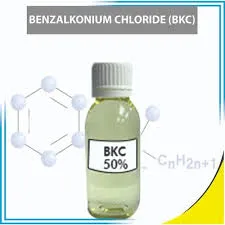polyaluminium chloride ph
The Importance of pH in Polyaluminium Chloride Applications
Polyaluminium chloride (PAC) is a widely used coagulant in water treatment processes, known for its effectiveness in removing impurities from water. One critical factor that influences the performance of PAC is the pH of the solution in which it is used. Understanding and managing the pH can significantly enhance the efficiency of PAC in various applications, from municipal water treatment to industrial processes.
What is Polyaluminium Chloride?
PAC is an inorganic polymer and a type of aluminium-based coagulant that features high charge density. It is generally available in liquid or powder form. The usage of PAC has gained popularity due to its superior flocculation capability, lower dosage requirement, and minimal sludge production compared to traditional coagulants like alum.
The Role of pH in Chemical Reactions
pH, which measures the acidity or alkalinity of a solution, plays a pivotal role in numerous chemical processes, including coagulation and flocculation. PAC operates effectively across a range of pH levels; however, the pH of the water being treated can significantly influence its coagulation performance. For optimal efficiency, maintaining the appropriate pH is crucial.
Optimal pH Ranges
polyaluminium chloride ph

Research indicates that the optimal pH range for PAC's coagulation efficacy is typically between 5.5 and 7.5. At this range, PAC can effectively destabilize colloidal particles in water, facilitating their aggregation into larger flocs that can be easily removed during the sedimentation process. If the pH drops below 5.5, increased concentrations of free Al3+ ions may lead to the formation of small, non-settleable flocs, resulting in ineffective coagulation. Conversely, if the pH rises above 7.5, the formation of aluminium hydroxide precipitates can occur, which may hinder the coagulation process.
Monitoring and Adjusting pH
To ensure optimal coagulation with PAC, it is essential to monitor and adjust the pH of the water being treated. This can be achieved through the addition of acids or alkalis, depending on the initial pH level. For instance, in cases where the pH is too low, mild alkalis like sodium bicarbonate can be used to elevate the pH. Conversely, in situations where the water is excessively alkaline, acids such as sulfuric or hydrochloric acid may be employed to lower the pH.
Impact on Treatment Efficiency
The efficiency of PAC in removing contaminants is directly influenced by the pH of the solution. Proper pH control not only enhances the coagulation process but also minimizes the amount of PAC needed, leading to cost savings and reduced environmental impact. Additionally, maintaining the appropriate pH promotes the formation of larger and denser flocs, which can significantly improve the sedimentation and filtration processes.
Conclusion
In summary, the pH level is a crucial factor that affects the performance of polyaluminium chloride in water treatment applications. By understanding the optimal pH range and implementing effective monitoring and adjustment strategies, operators can maximize the benefits of PAC, ensuring cleaner and safer water. As the demand for efficient water treatment continues to grow, the importance of pH management in the use of PAC will only become more significant, paving the way for advancements in water treatment technologies.
-
Water Treatment with Flocculant Water TreatmentNewsJun.12,2025
-
Polymaleic AnhydrideNewsJun.12,2025
-
Polyaspartic AcidNewsJun.12,2025
-
Enhance Industrial Processes with IsothiazolinonesNewsJun.12,2025
-
Enhance Industrial Processes with PBTCA SolutionsNewsJun.12,2025
-
Dodecyldimethylbenzylammonium Chloride SolutionsNewsJun.12,2025





